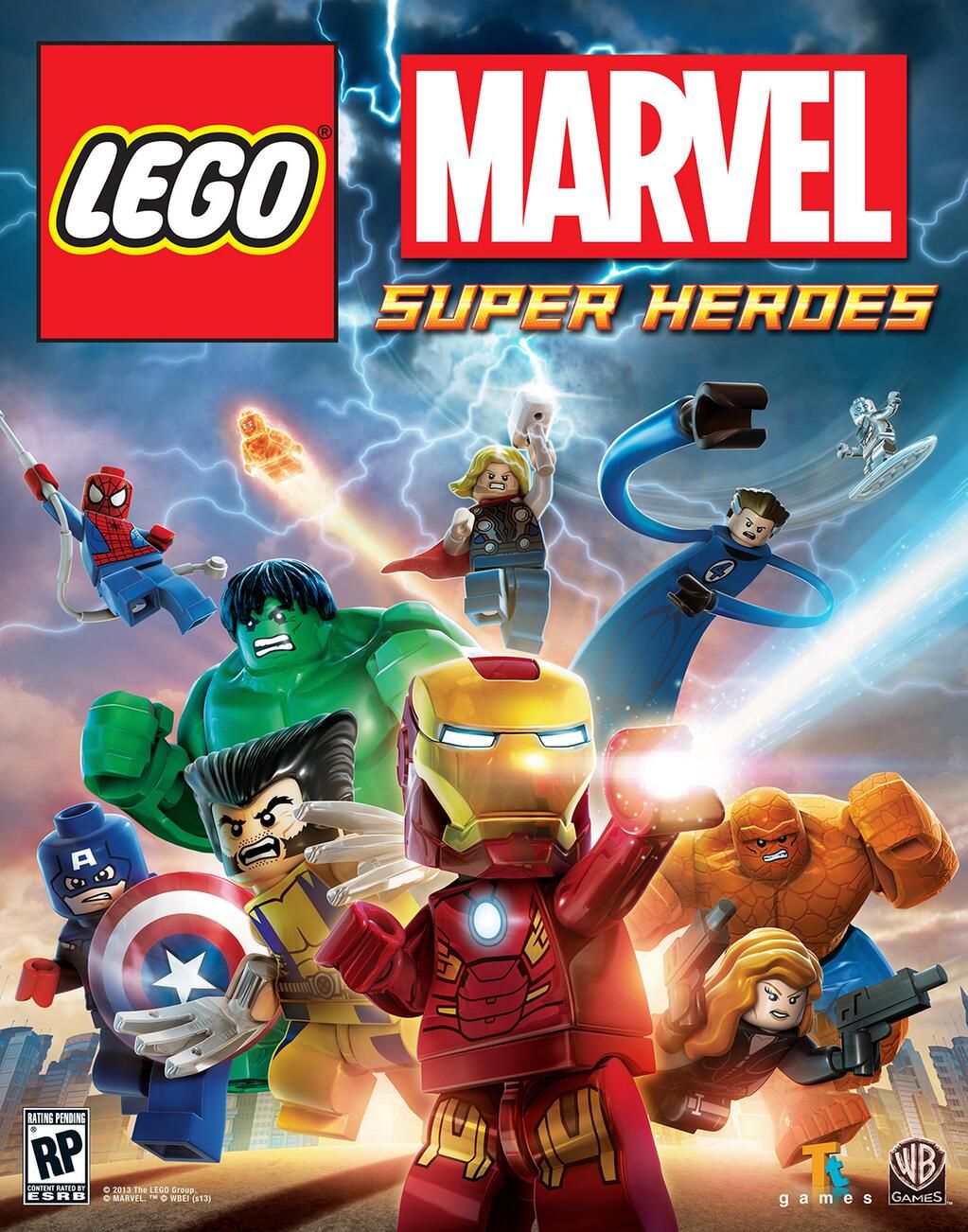 LEGO MARVEL SUPERHEROES REVIEW
LEGO MARVEL SUPERHEROES REVIEWWhen it comes to adapting one of the film industry's most acclaimed narrative universes to a new entertainment medium, those at the helm will be subject to a level of expectation from fans which surpasses any programming challenges or financial constraints. With LEGO Marvel Superheroes, then, TT Games can't rely on the merits of their past franchise efforts to appease their source material's hardcore followers.
The game's first certainty is that the much-vaunted emphasis on character diversity from the development team has been fulfilled in the final product spectacularly. Players will take control of Iron Man, the Hulk and Spider-Man in the opening mission alone, and the superhero teams enlisted as the narrative progresses become broader and incorporate more of Marvel's various franchises with each passing level. There are naturally some character archetype sets which each hero and villain fits into in some form, yet without question, each of the campaign and its open-world setting's 150 constructs are unique to an extent, a trait which could scarcely be attributed to LEGO Star Wars or its immediate successors.
In contrast to LEGO Batman 2: DC Superheroes' haphazard approach to merging its ensemble's universes into a singular storyline, LEGO Marvel's plot apes the bombastic, oft-comedic nature of its comic-book and motion picture inspiration in grand fashion. Clark Gregg and Stan Lee are amongst the only true voice actors to physically reprise their roles from the Avengers films, but most of the thespians standing in for Robert Downey Jr, Samuel L. Jackson and company do a respectable job with the content they're offered. As expected, the campaign's script is littered with references to both the big screen and comic-book interpretations of Lee's creations, and even Deadpool himself gets a say in the most reality-intrusive and oft-hilarious manner possible. Hardcore devotees should be thrilled to learn that Lee himself is hidden in each of the campaign's 15 levels and across the title's open-world, and that by discovering each and every one of his "cameos", they'll eventually unlock him as a playable, super-powered character. Fan service was clearly at the heart of the team's intent in crafting the narrative, and TT's gambit (pun fully intended) has easily paid off.
As churlish as it might seem to assess a current-generation title's graphical fidelity upon the dawn of a new generation of video game hardware, in this instance to do so is wholly warranted. TT have captured the visual spectacle of the Marvel Cinematic Universe just as remarkably as they did Gotham City and Middle-Earth, with New York, the X-Mansion, Asteroid M, Asgard and plenty more iconic locales rendered in such a way that is extremely faithful to their original on-screen incarnations. On Xbox One and PlayStation 4, the lighting effects (particularly in NYC) are an improvement, although equally, the player is hardly missing out if they elect to stick with the Xbox 360, PlayStation 3 or other current-generation versions in this regard, each of them holding up their own overall as their period of industry domination comes to a close. If this is what a multi-generation edition of a LEGO can do, of course, then the mind races at the concept of what a full next-generation incarnation built from the ground up could achieve from an aesthetic perspective.
Conversely, whereas the replay value of the LEGO franchise's various instalments has generally been one of its strongest asserts, in this case the scope is somewhat more limited. New York is not lacking for bonus missions, extra unlockable characters and all of the other standard open-world tropes of the series, yet the campaign's missions are sub-par at times in terms of structural innovation, failing to develop upon the puzzle room-based nature of the series and becoming visibly stagnant in this sense due to levels often revolving around a frequently extended chase of an iconic super-villain. LEGO The Lord of the Rings was always compelling as a result of the player's foreknowledge of the setpieces and narrative developments that were to come, yet LEGO Marvel is more restricted here due to its not being primarily based on a central film/comic-book storyline, as was the issue with Batman's second foray into the brick-busting world. Nevertheless, NYC, Stan Lee and the 15 collectible comic-book issues will keep those eager fanatics going for weeks, if not months, on end.
What LEGO Marvel Superheroes lacks in ingenuity, though, it compensates for with the characteristic charm of its source material. TT Games have crammed the narrative, the open-world and its inhabitants with all of the care and dedicated attention that Marvel Studios do with their films and TV series, which should make the former's latest product a must-own for any true Marvelites out there. LEGO The Lord of the Rings may hold a superior sense of level structure and narrative compulsion, but if the franchise has taken a step back here, then the detrimental effects are minimal at most. When the studio get to work on their version of The Hobbit, lessons can be learnt in the realms of replay value, yet there's still more content presented here than any other tie-in featuring the word "Excelsior". Will LEGO Marvel's ensemble ever consider assembling for a sequel, then? There's at least enough promise from their first outing to confirm that one day, they'll come back- because we'll need them to.
8/10

No comments:
Post a Comment